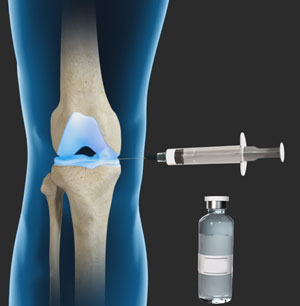
What is Gel-One?
For joints in the body to move smoothly they must contain an adequate amount of synovial fluid, which acts as a lubricant and shock absorber. Gel-One is a synthetic version of the synovial fluid that normally surrounds the joints in our body.
Gel-One is used to treat knee pain caused by osteoarthritis. Osteoarthritis causes synovial fluid to lose its properties by the depletion of a component called hyaluronan. This leads to a loss of cartilage and painful rubbing of the bones in the joints. Gel-like forms of hyaluronan called hyaluronates or hyaluronic acid may be prepared and injected into the joints to increase their lubricating and shock-absorbing properties. Hyaluronate injections can relieve pain, improve mobility and delay the need for surgery.
Precautions
You should not use hyaluronates if you have any kind of allergies. Your doctor will assess your medical history which may involve checking for skin or joint infections in the area around the injection site, and circulation problems in the legs before using Gel-One.
If you are pregnant, consult with your doctor about the potential risks of using this medication.
Gel-One Procedure
The procedure first involves the removal of any excess joint fluid with a syringe. The Gel-One is then injected into the knee joint directly. Immediately following the injection, you may experience pain, swelling, and warmth, which can be eased by ice applications. Avoid weight-bearing or strenuous activity involving the joint for the next 48 hours. A single weekly dose over 3 to 5 weeks may be required for optimum benefits.
Risks and Complications
As with any procedure, Gel-One is associated with certain risks and complications which may include:
- Swelling or severe pain around the knee
- Pain, redness or warmth and bruising in the injection site
- Nausea and stomach pain
- Difficulty walking
- Hands or feet swelling
- Back, joint and muscle pain
- Numbness or tingly feeling
- Headache and dizziness
- Runny or stuffy nose, sneezing, and sore throat






